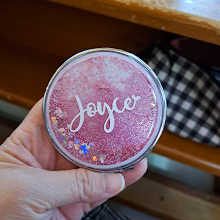Why is sun protection so important?
Sun protection is a crucial aspect of maintaining healthy skin and reducing the risk of sun damage, premature aging, and skin cancer.
The sun's ultraviolet (UV) rays can cause immediate damage to the skin, such as sunburn, tanning, and sunspots. Prolonged and repeated exposure to UV rays over time can lead to more severe consequences, including premature aging (wrinkles, sagging skin) and an increased risk of skin cancer, including melanoma, the most dangerous form of skin cancer.
What are UV rays?
The sun emits ultraviolet (UV) radiation, a type of energy which cannot be detected by our senses, unlike the sun's light or heat. Therefore, we will not notice the damage until it's been done.
UV radiation consists of UVA and UVB
rays. Both UVA and UVB rays are harmful to the skin.
- UVA rays penetrate deeply into the dermis layer of your skin, causing wrinkles and age spots, making your skin looks older than it is, causing long-term damage and premature aging.
- UVB rays primarily affect the surface of your skin and cause sunburn.
- Both types of UV rays contribute to the development of skin cancer.
The UV Index (UVI) is a measure of the intensity of UV radiation on the Earth's surface that is relevant to effects on the human skin.
The Global Solar UV Index measures UV levels on a scale from 0 (Low) to 11+ (Extreme). Sun protection is recommended when UV levels are 3 (Moderate) or higher.

📲 Recommendation from WHO📲
Download the free SunSmart Global UV app to get advice and five-day forecasts on UV index and sun protection necessity.
Android: https://bit.ly/44v9LuQ
What is SPF?
SPF or Sun Protection Factor is a measure of a sunscreen's ability to protect the skin from UVB rays. It indicates how long you can stay in the sun without getting sunburn compared to not using sunscreen.
For example, if you use SPF 30, you can stay in the sun 30 times longer without burning than if you were unprotected.
SPF 15: Prevents 93% of UVB rays from being absorbed by the skin.
SPF 30: Prevents 97% of UVB rays from being absorbed by the skin.
SPF 50: Prevents 98% of UVB rays from being absorbed by the skin.
However, bear in mind that SPF does not indicate the level of UVA protection. Therefore, it is recommended to opt for "broad-spectrum" sunscreens that offer
protection against both UVA and UVB rays.
How to protect your skin from harmful UV rays?
🧴Apply sunscreen🧴
Apply sunscreen often, generously, and evenly to all
exposed areas of the skin. The American Academy of Dermatology
recommends using about one ounce (approximately a shot glass) of
sunscreen to cover the entire body. Apply it at least 15-30 minutes
before sun exposure to allow it to bind to the skin properly. Reapply
every two hours or more frequently if swimming, sweating heavily, or
toweling off.
Look for sunscreens with active ingredients such as zinc oxide and titanium
dioxide (physical blockers) that reflect and scatter UV
radiation. These ingredients are less likely to cause skin irritation or
allergic reactions compared to some chemical sunscreen ingredients.
However, many sunscreens now use chemical filters that absorb UV rays.
Find a sunscreen that suits your skin type and preferences.
🌴Seek shade🌴
Stay in shade whenever possible. When the sun is strongest, typically between 10 a.m. and 4
p.m., seek shade to reduce your exposure to harmful UV rays. If shade
is limited or unavailable, consider using an
umbrella or wearing protective clothing.
😎 Cover up with clothing, sunglasses, and a hat 😎
Wearing sun-protective clothing, sunglasses, and a hat when you are under the sun is an
effective way to shield your skin from the sun's harmful rays.
Look for
garments with a tight weave, dark colors, and a UPF (Ultraviolet
Protection Factor) label, which indicates the amount of UV radiation the
fabric blocks. A higher UPF rating means greater protection.
Wide-brimmed hats, sunglasses, and UV-blocking umbrellas also provide
additional protection.
☀️ Adopt sun-protective behaviors ☀️
Along with sunscreen and protective clothing,
adopting sun-safe behaviors is essential. Avoid tanning beds and
sunlamps, as they emit harmful UV radiation that can damage the skin.
Regularly perform skin self-examinations to detect any new or changing
moles, spots, or growths. Consult a dermatologist if you notice anything
suspicious.
Remember, sun protection is necessary year-round, regardless of the
weather or the season. Even on cloudy or cooler days, UV rays can still
penetrate the clouds and cause damage to the skin.
By adopting sun-safe
habits and regularly using sun protection measures, we can help
safeguard your skin from the harmful effects of the sun.























No comments